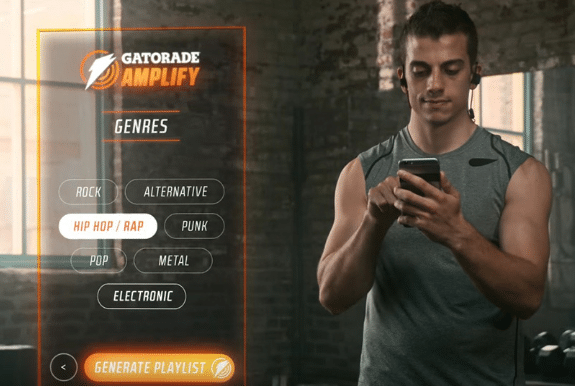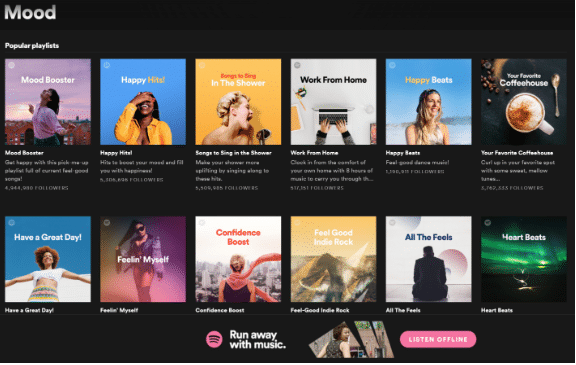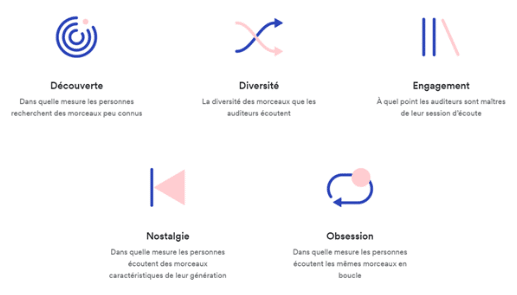Digital Media Specialist
Spotify: A goldmine for advertisers
Digital Media Specialist
Spotify is one of the most popular music streaming apps . It offers the possibility of listening to streaming music, podcasts and other content from artists through its platform. It is available on smartphones, computers, tablets, TVs and cars, allowing users to access it anywhere and anytime. The company had 286 million users at the end of March 2020, including 131 million paid subscribers (the majority choose the free subscription, with advertisements).
Towards the end of February 2020, with the onset of COVID-19, Spotify experienced a decrease in active users on its platform, especially in hard-hit countries such as Italy. Nevertheless, a significant recovery in activity has already been observed in recent weeks, with a 31% increase in active users in March 2020 compared to March 2019.
Another recent fluctuation: an increase in the interest of its users for news podcasts (news podcasts). That's why Spotify now offers the COVID-19 hub, making it easy to find information in one place. Another change in behavior observed during this period of confinement: users would be more likely to listen to relaxing music, that is to say rather instrumental and with a slower rhythm.
Thanks to its streaming intelligence ( Spotify's first party data ), the platform is not to be underestimated when it comes to the strong strategic potential it can offer advertisers.
THE DIFFERENT TYPES OF ADS ON SPOTIFY
Spotify Ad Studio provides a variety of ad formats to enable brands to communicate their message in the right way and to the desired audience. Advertisers can choose between audio, video, display and sponsorship formats .
The Audio Everywhere format gives advertisers the possibility of communicating with their audience at any time of the day and on all types of devices compatible with Spotify. During a listening session, the audio commercial occurs approximately every 15 minutes between two songs.
This advertisement can have a maximum duration of 30 seconds and can be accompanied by a square format display banner, redirecting users to the desired website.
On the video side, two options are possible: Sponsored Session and Video Takeover . The Sponsored Session format is an interesting option for brands with an awareness strategy, since it consists of offering the targeted audience 30 minutes of music without interruption. The user must view the advertiser's video ad and click on the display banner (which increases engagement) in order to access this sponsored session. The Video Takeover format is a video ad for brands to tell their story that appears during ad breaks. This format is also used to improve the notoriety of a brand or a product.
For example, the Dunkin' Donuts brand used the Video Takeover ad format to promote its Cold Brew coffee . The objective of this month-long campaign was to generate interest in its product. By communicating its video message to users on desktop and mobile, the campaign generated 4 million completed views . According to Spotify, this campaign increased ad recall by 65% and brand awareness by 25%. It also generated a significant increase in visibility compared to previously established benchmarks .

On the display advertising side, three formats are available. First the Overlay , an advertisement displayed in full screen mode to recurring visitors to the platform. This banner ad is useful for driving traffic to the advertiser's site. The Homepage Takeover is a 1200 x 270 format display banner, available only on desktop, which allows the advertiser to display their advertising message on the Spotify homepage for 24 hours. Finally, the Leaderboard format , an IAB-standard display ad, broadcasts an advertiser's message for 30 seconds on desktop as well as on Spotify's web application. Display advertising is a good complement to audio and video formats. In addition to being able to generate traffic, it can serve as a brand reminder.
In the sponsorship category, we find the Sponsored Playlist advertising format . This is a playlist created by Spotify for a target audience, and that a brand can decide to sponsor, in addition to affixing its logo to it. The brand can then communicate an audio and video message during commercial breaks and run a native -like ad to drive traffic. This format can be very interesting for a brand wishing to move forward with a multi-format campaign aimed at increasing its notoriety.
SPOTIFY'S FIRST PARTY DATA
Spotify's advertising model relies on the immense collection of personal data from its users. First, through the account opening process that everyone must go through in order to have access to its streaming service . Then, thanks to the multitude of information collected on the listening habits of users, and this, in real time.
A very interesting aspect of Spotify's first party data measurement is interconnectivity. The fact that a user can connect to the platform from his smartphone, his computer or his tablet, allows Spotify to follow the journey of each of them.
In addition, listening habits make it possible to learn more about a user's personality, but also about his mood, his tastes, his different behaviors on the platform, his personality, his advertising commitment, his favorite electronic device for listening to music and even on what he is doing according to the chosen playlist . This is called streaming intelligence on the platform.
For example, the Gatorade brand has used streaming intelligence . The campaign aimed to build brand awareness among young American Hispanic athletes and consumers between the ages of 18 and 34. Gatorade opted for a multi-format campaign including audio, mobile display, as well as sponsored session and defined its target audience based on interest targeting. According to Spotify , this campaign generated a 171% increase in ad recall rate over the benchmark and the target audience rated the ad as relevant.

Additionally, Spotify playlists can provide insights to marketers as to what activity a user is potentially performing. A sports brand like Under Armor could, for example, decide to sponsor one of the Spotify playlists in the Workout category .

Using the data collected, Spotify was able to identify and categorize five major listening habits that can help companies better target their audience.

Finally, Spotify has identified various categories of users, including millennials, early tech adopters and mothers. For example, the audience of millennials on Spotify could be of interest to a brand like Samsung, since according to the analysis carried out by the platform, millennials are " 44% more likely to keep their friends and family regularly informed of new products, they are 64% more likely to buy products from brands they have been exposed to through advertising and they are 90% more likely to own the latest high-tech products ”. A campaign running the display, audio and video ad formats could thus increase brand awareness of Samsung or one of its products like the Galaxy S20 Ultra.
THE UNTAPPED POTENTIAL OF SPOTIFY
As a digital media analyst, I believe that many brands would have a lot to gain from using Spotify and taking advantage of its streaming intelligence and first-party data to reach their targets in their user journey, from awareness to conversion. . That said, to date, advertising campaigns on Spotify do not enjoy the same popularity among advertisers as those on Facebook. There is therefore an opportunity for brands to be present on a currently less saturated advertising platform.
There is also the opportunity to stand out and innovate. In fact, a use case that I find very inspiring is that of Adidas. By looking at the accelerometer on users' phones as they jog (in real time), Adidas was able to analyze their cadence and use that data to find songs whose BPM matches the intensity of the run. For the first time, it was no longer the runners who listened to the music, but the music who listened to them.
In conclusion, with its streaming intelligence and insightful user journey data , Spotify ad campaigns are a goldmine for marketers looking to reach new generations.



.jpg)




